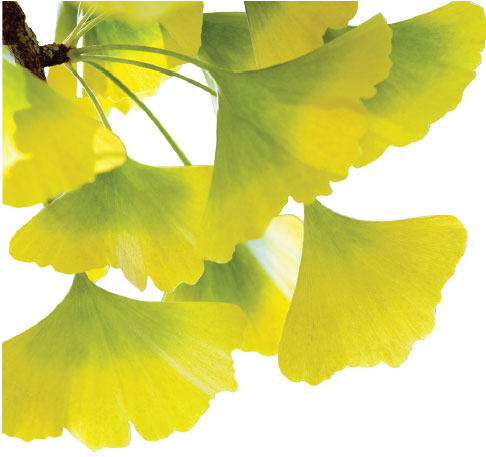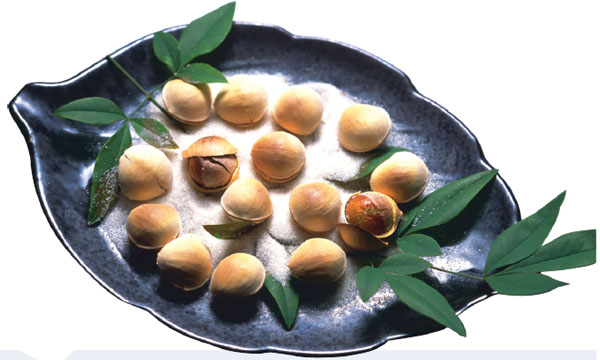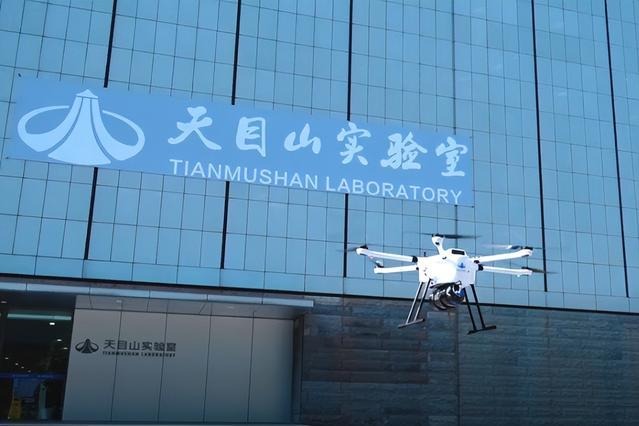Ginkgo: an edible fossil

Editor's Note: China is divided into as many culinary regions as there are different ethnic groups. Its geographical diversity and kaleidoscopic cultural profiles contribute to the unending banquet of flavors.
It takes three generations for the ginkgo tree to bear fruit, and that's why the Chinese call it gongsun shu, the grandfather-grandchild tree. Grown from seed, it will have to be 20 years old before it first flowers, and another 20 years before it will produce a decent crop of fruit.
Of course, it also needs to be planted in pairs or in greater numbers, because there are male and female trees and they are indistinguishable until they start flowering. They are pollinated with the help of the wind.
Yet, despite its finicky growing habits, the ginkgo has survived geological ages. Literally. It is a living fossil, having been around for almost 270 million years, according to archaeological evidence. Its relatives are all extinct and it happily occupies the genus Ginkgophyta all by itself.

| The lightly cracked and salt-roasted snack is good with Chinese tea or beer. Photos Provided to China Daily |
It is often known by the English name of maidenhair tree, although it is not a fern, nor related to the fern of that name. The only reason for the link is that both fern and ginkgo tree have leaves that are two-lobed, which also explains. the name Ginkgo biloba.
On its native turf, the tree is also known as yinxing or silver apricot and baiguo or white fruit. Both names refer to the shape of the fruit. Botanists tell us that the "fruit" is actually not a fruit, but a fleshy seed with a nut-like gametophyte with a hard shell. That is the only edible part of the ginkgo, and it is popularly known as the ginkgo nut.
The ginkgo is native to China, although it has been exported and cultivated in many Asian countries and in Europe and the Americas for its ornamental beauty.
Many streets in China's major cities are lined with ginkgo trees, and they are enjoyed in all seasons.
They are most beautiful in autumn, when the first nip in the air turns the trees a bright yellow before they drop their leaves and carpet the ground below with a layer of gold.
In spring, the miniature lobed leaves mist the naked branches with a tender green, and in full summer the foliage is lush and luxuriant. Mature leaves are often used as bookmarks, and the shape is a popular design motif in Chinese art.
It is also only in China that the ginkgo nut is widely eaten as food, although an extract of its leaves is sold as a Western health supplement to combat dementia.
Foreigners new to China may have accidentally trodden on fallen fruit underneath the ginkgo trees in autumn and lived to regret it. These fleshy fruits may look like tiny apricots, but they stink like the botanical equivalent of an infuriated skunk.
Once harvested, the fruits have to be soaked in water before the fleshy bits are carefully rubbed off. The soft cells actually contain a mildly poisonous skin and eye irritant.
Once the inner shells are cleaned and dried in the sun, they turn sparkling white and brittle. They are sold in this form.
Cooks need to crack the shells and then carefully remove a thin bi-colored, papery membrane from the bright yellow kernels before using them in dishes.
The ginkgo nut is eaten throughout China. It is lightly cracked and salt-roasted in its shell to be eaten as a snack, and served with Chinese tea or beer.
It is shelled and skinned and used in sweet soups, often cooked with barley and dried beancurd sticks. The Cantonese are especially fond of ginkgo desserts and in Chaoshan, candied ginkgo nuts are served with a sweetened yam puree.
It is used in a savory soup with white peppercorns and a whole chicken stuffed into pig tripe. A popular breakfast food in southern China is rice congee cooked with ginkgo nuts, and ginkgo nuts are also used in the classic Fujian dish Buddha Jumps Over the Wall.
It is popular in vegetarian stews and stir-fries because of its unique flavor, first sweet on the tongue but finishing with a slightly bitter aftertaste.
Although Western researchers are still unconvinced, traditional Chinese medical practitioners have long used the ginkgo to help patients with bronchial problems and asthma, decaying teeth, urinary tract infections and diarrhea, to name just a few.
Its bark and leaves are composted for an organic pesticide and weed deterrent, and ginkgo extracts are also used in animal husbandry.
Ginkgo has become increasingly popular as an ingredient in cosmetics, for its whitening properties.
There was a supplement fad many years ago when ginkgo extracts were touted as a memory aid, which resulted in a few widely publicized cases of severe contraindications. Ginkgo, eaten in large quantities and over a sustained period, is poisonous-a fact that the average Chinese is aware of from childhood.
Even good things must be eaten in moderation.
paulined@chinadaily.com.cn
Choosing and preparing ginkgo nuts
Make sure the nuts are white and clean. Do not buy speckled or moldy ones. Crack the nuts. The kernels inside must be soft to the touch and not dried-up and hard. Discard hard kernels. Drop the kernels into hot water and wait a few minutes. The membranes should rub off easily. Rinse the nuts, and they are ready to use.
Gingko and Barley Sweet Soup
This is a Cantonese favorite and an excellent summer cooler and detox drink.
100g pearl barley, rinsed
100g ginkgo nuts, shelled and prepared
2-3 pandan leaves, optional
Rock sugar, to taste
Place barley and ginkgo into a two-liter pot of boiling water. Add knotted pandan leaves. Allow to boil for 10 minutes and lower to a simmer for another 30 minutes.
Add rock sugar to taste. Serve hot or chilled.
If you cannot get pandan leaves, substitute with a scraped vanilla bean.
Salt-Roasted Ginkgo Nuts
A favorite beer food. This should be eaten in moderation. A safe limit is about 100g per person per day.
300g ginkgo nuts
1 large heaping tablespoon rough sea salt
Lightly crack the ginkgo shells but do not remove them.
Heat up a thick-bottomed pan or cast-iron wok and fry the salt and ginkgo nuts together over high heat for two minutes. Lower the fire and lightly sprinkle a few drops of water over the nuts. Cook the nuts for another two minutes, or until you see a light salt crust forming on the shells. Keep tossing the nuts.
Cool slightly before serving. The nuts can get very hot.
Chicken and Tripe Soup with Ginkgo
This is a simplified version of the whole chicken-in-a-pig's-stomach classic.
One chicken breast and one whole leg, cut in pieces
300g cleaned pig's tripe
20-30 ginkgo nuts, shelled and skinned
1 tablespoon white peppercorns, lightly cracked
1 teaspoon black peppercorns, lightly cracked
1 3-cm slice ginger
Salt to taste
Clean chicken pieces and remove skin and all visible fat. Rub with a spoonful of salt and rinse.
Cut up the tripe into bite-sized pieces and rub hard with rough salt to get rid of any remaining slime. Rinse well until water runs clear.
Heat up three liters of water in a large pot, and when it's boiling hard, gently drop in chicken, tripe, ginkgo nuts, peppercorns and ginger. Keep it at a rolling boil until soup turns milky. Then, turn down heat to a gentle simmer for 30 minutes. Season to taste.
This soup is slightly spicy from the peppercorns and ginger, but drunk piping hot, it draws perspiration and cools down the body.
(China Daily European Weekly 05/12/2017 page20)
Today's Top News
- China holds national memorial for Nanjing Massacre victims, calling for remembrance of history
- New plan will be a road map for a stronger future
- Taiwan's character of the year a vote against confrontation
- Strengthened resilience key for economy
- Video sheds new light on Japan's wartime atrocities
- Xi: World yearns for peace, trust more than ever































